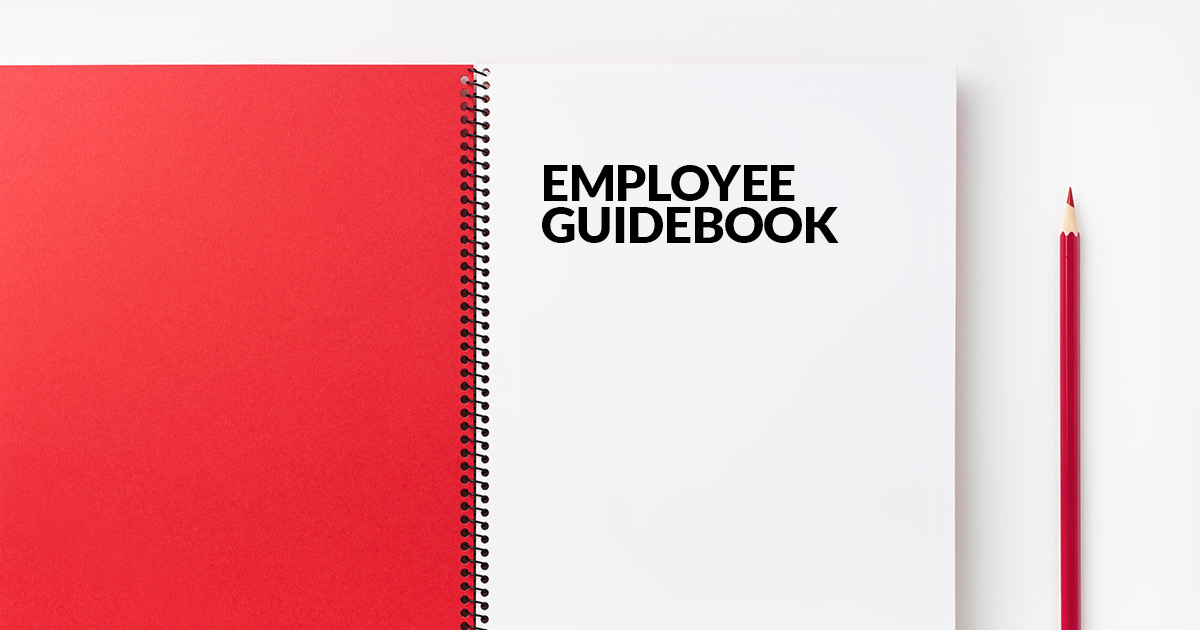The employee handbook is a crucial document for the running of any business.
Also known as the staff handbook, it describes the company’s mission, policies, and culture. But more importantly, it lays out what behavior the company expects of the employees and the management team.
If you are interested in learning more about what the employee manual, what it does, and how it can assist both employers and employees, keep reading.
What is the purpose of the employee handbook?
Objective 1: Formalized Policies
As we briefly mentioned above, a staff guidebook is a formal write-up of the company’s operating procedures and policies. By including everything in one manual, you can ensure that employees of every level from older staff to new hires have the same access to and understanding of the company’s operational procedures. In this way, all employees are treated equally and held accountable to the same standards and policies.
Objective 2: Equality promoted
A significant part of the employee guidebook is the policies outlining what employers expected from all their employees. These are standard guidelines that must be followed by all company staff. Having this information accessible to all company employees creates equal opportunity for promotion and advancement. That is because the handbook allows all staff to educate themselves on how management evaluates and selects candidates for promotion. And at the same time, it helps managers to make informed decisions when they are selecting candidates for further development. As the handbook informs managers on what standard criteria the candidates must excel at to qualify for a promotion.
Objective 3: Time saved
A well-drafted staff manual is an excellent device for saving time. For new employees, it is a great tool to introduce them to their new employer as the handbook contains in-depth information about the company, such as its mission, vision, and values.
Another way the staff manual saves time is it can provide new employees with all the answers they might need about how the company operates. Including how the company will apply its procedures, how it addresses employ concerns, and what employees can expect from their employer in general.
As for older staff, whenever they have questions, they can consult the manual instead of asking their supervisors. In this way, time is freed up for both supervisors and employees, allowing them to refocus on their work.
Objective 4: Legal disputes prevented
Other than introducing the reader to who the company is, the handbook will cover policies on working conditions (ex. working hours), workplace equality, protection of pregnant workers, gender equality, equal pay, and many more. By doing this, companies can protect themselves from lawsuits, including discrimination claims, wrongful termination, and harassment claims.
By clearly stating all their policies in an employee handbook, employers protect themselves against legal disputes as it prevents any legal loopholes from being exploited and ensures that the company is following all the relevant employment laws. And that the ethical treatment for all staff is the same.
How to write an employee handbook?
Now that you understand a little more about what an employee handbook is and its purpose, let’s discuss how to write one so that you can write one for your company.
Writing an employee handbook can be a simple process. Follow our instructions below to if this is your first time writing one and you need some tips on how to begin:
- Quick and Simple is best: Using long and complicated terms will only confuse the reader and cause them to abandon reading the handbook. We recommend you use short and simple phrases to accelerate reading time and understanding.
- Appropriate Tone: The tone of voice should reflect your corporation’s tone and culture. To make the manual even more engaging and legible for the reader, use the 2nd person point of view to address them directly.
- Simplify: Take all your company’s existing policies, remove any jargon and technical terms, and rewrite them in a more straightforward language to make them more consumable for the reader.
- Add Visual Interest: Adding images and videos to your manual will add some visual interest to your manual. Using images depicting your actual employees on a typical day at the office or a video message from the CEO can make the manual a more exciting read.
- Use a unique format: Make your staff handbook a more pleasant read by disregarding the typical book format and using something more engaging like a quiz or an interactive survey instead.
Do you need help writing or editing your employee handbook? Then contact GRS Group, we are the largest recruitment agency in Cyprus, and we have over 15 years of experience in helping companies with all their recruiting and employee management needs. Our expert team can help you write or edit your handbook into something that is a compelling read and still covers all the necessary information.
